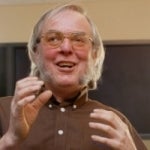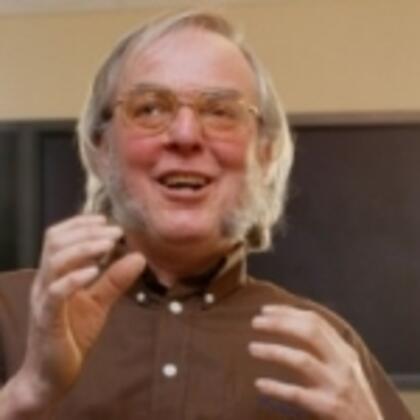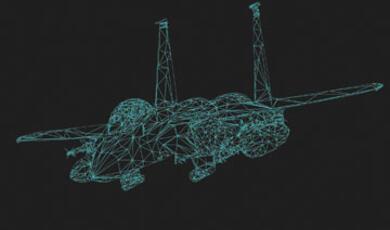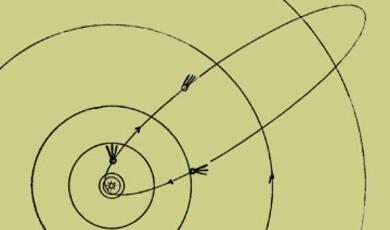Beagle 2 and Beyond
Share
- Details
- Transcript
- Audio
- Downloads
- Extra Reading
One year on from the launch of Beagle 2, former Gresham Professor Colin Pillinger talks about the developments that have taken place.
Download Transcript
Beagle 2 and Beyond
Professor Colin Pillinger
(Gresham Professor of Astronomy 1996-2000)
The lecture began with a reprise of the Beagle 2 project as recorded on video. Before showing the six minute tape, Colin warned that this film was a bit of a weepy in parts, but to listen carefully as the message was in the music and indeed it was: there in the sound track was the refrain "got to get it right next time". The last line of all answered the question on everyone's lips "Are we going to fly Beagle 2 again?" Well, Colin has a plan!
Some of the subjects covered by the lecture will have been familiar to Colin's regular audience from his Gresham College days. The idea of looking for life elsewhere in the solar system arose from his involvement with the Apollo moon programme. He also recounted how the NASA Viking missions of 1976 had not been able to answer the question "Is there or was there life on Mars?" but had provided the data which allowed Colin's group to demonstrate that here on Earth there are meteorites from the red planet. These had in turn provided the information that the conditions to support life existed on Mars. They also contained organic matter which, if it was martian in origin, could be the evidence that life existed on our solar system neighbour.
Colin reminded the audience that unfortunately it could also be contamination acquired since the meteorites arrived on Earth. It was to resolve this ambiguity that Beagle 2 was conceived. The same experiments conducted on Earth would be carried to Mars and repeated in a way which would exclude the possibility of confusion by Earth's processes.
Colin described how the tiny Beagle 2 spacecraft was built in a very clean "clean-room" with experiments to study carbon, its compounds and isotopes in samples which were chemically and geologically characterised in situ on Mars. Some of the materials to be investigated would come from protected sites inside rocks or under the surface.
The Beagle 2 craft was last seen by its mother ship, ESA ' s Mars Express (MEx), heading towards Mars a few days before Chris tmas 2003. Thereafter it failed to radio back any information. Colin said that at that point all those people who had said that it was a great idea to name the spacecraft after the ship which took Charles Darwin around the world, and led to him writing "On the Origin of Species", began to say didn ' t you know you should never let a beagle off the leash because they are notorious for not coming when called.
Colin acknowledged that the lesson the team had learned from this was that they should have stayed in radio contact with Beagle 2 as it descended through the martian atmosphere. This omission was not the team ' s choice but had been forced on them because the European Space Agency had decided that the orbiter must take precedence and would not be turned in Beagle 2 ' s direction during the orbit insertion manoeuvre. Using MEx as a relay was the only way that a signal could be sent to Earth at that time; developments since mean that other ways would now be possible, if there was a next time.
Colin emphasized that however nobody should believe Beagle 2 was a failure. It had convinced the Government that the country wanted to be involved in space exploration. It required young people to study science and engineering. The project had generated some amazing spin-offs. Not least the development of a mass spectrometer which was being adapted, with the help of the Wellcome Trust, for a variety of medical uses, including early diagnosis of patients suffering from cancer. Such developments, if realised, would more than repay the investment made in the spacecraft.
The team also now know how well they can target a lander at Mars and therefore next time it would be possible to choose a landing site which was much less dangerous. For the future as well, they were working on a method of landing that did not require bouncing around all over the surface. Colin said he did not like this concept because it was so difficult to predict what might happen after the first bounce. He also acknowledged that it required packing the radio aerial inside; that was a potential mistake because no signal could be obtained until Beagle 2 opened. If just one of the hinges, needed to fold out the solar arrays, did not function, the whole mission would have failed.
Such problems were a feature of space missions so the only way to increase the chances of success was to eliminate the unpredictable or accidental risks in the mission by flying two spacecraft and being prepared to use the data from one to make sure the second one was a success. Such an approach was always followed by NASA.
Finally in true British fashion Colin blamed the weather on Mars for Beagle 2 ' s downfall. The time at which Beagle 2 had to land (it could not be changed once the rocket was launched) had the lander entering the atmosphere in the mid-afternoon when it was most turbulent and when the winds were most violent. Had Beagle 2 been the priority, more fuel could have been burned to secure a morning landing. Beagle 2 was supposed to arrive at Mars after what is called the dust storm season. Astronomers looking at the planet with their ground-based telescopes had told Colin that, in 2003, the dust storms lasted longer than at anytime in the last 400 years. That really is bad luck.
It was for this reason, in Colin ' s opinion, that any attempt to refly Beagle 2 should be made in 2009 when the dust storms could be avoided completely. He also said that next time the plan would be to take the craft into orbit first so that it could wait for the best landing conditions.
So will Beagle 2 fly again? Colin doesn ' t know. He did say that if the chances of finding life on Mars were good in 1997, when Beagle 2 was selected by ESA, then they are even better now because of new evidence about water, and the rocks that are produced in water, has been found on Mars by other space missions. The Beagle 2 approach to looking for life would be competitive until 2009 but then NASA would have developed the instruments to match Beagle 2 ' s capabilities.
Colin said it was going to be tough to achieve another mission by 2009 but, quoting eighteenth century philosopher David Hume, he made the point "the greater the obstacle to be overcome, the greater the glory". He said that if the Government and ESA committed to a new Beagle mission and, gave landing the priority it deserved, the project could still be the first to answer the big question "Are we along in the Universe?"
This event was on Wed, 08 Dec 2004
Support Gresham
Gresham College has offered an outstanding education to the public free of charge for over 400 years. Today, Gresham plays an important role in fostering a love of learning and a greater understanding of ourselves and the world around us. Your donation will help to widen our reach and to broaden our audience, allowing more people to benefit from a high-quality education from some of the brightest minds.


 Login
Login







